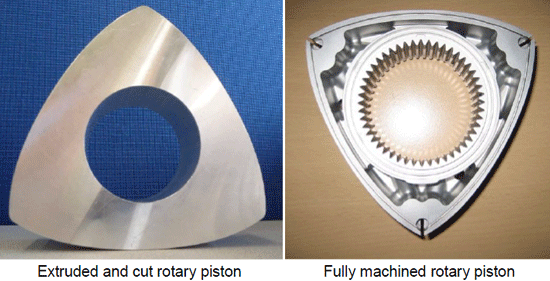Euro PM2012: Potential for Powder Metallurgy aluminium components in new Wankel rotary engine
AVL List GmbH is one of the world’s leading innovators of powertrain systems for the automotive industry, and the company has developed a prototype Wankel rotary engine for use as a range extender in the Audi A1 e-tron electric car, which was first introduced as a concept car at the 2010 Geneva Auto Salon. A1 e-tron (Fig. 1) was designed for zero emission city traffic using a robust electric motor with a peak power of 75kW (102 PS) driving the front wheels and giving a range of 30 miles on a fully charged battery.
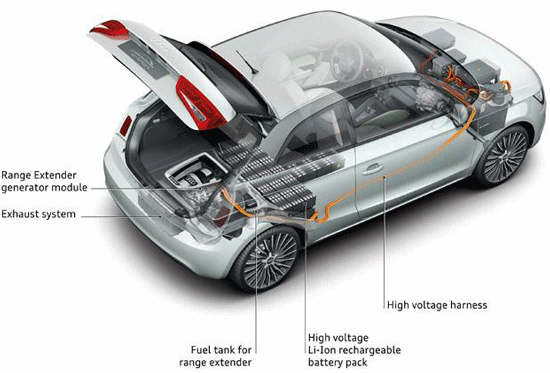
Fig.1 Audi ~A1 e-tron with Wankel rotary engine Range Extender. (From paper by J. Blaha, et at:’New Manufacturing Process for Wankel Engine Based Components’, presented at EuroPM2012, Basel, September 16-19, and published in the proceedings by EPMA)
AVL collaborated with Audi to find the ideal internal combustion engine (ICE) to extend the e-tron’s battery range, and came up with the single-rotor Wankel rotary engine concept (Fig.2). The low weight engine is extremely compact and is small enough to sit below the boot (cargo) floor of the e-tron. The single rotor 254cc Wankel engine provides the power to generate up to 15 kW of electrical energy, stretching total range of the e-tron car from 30 to 155 miles using one tank (3.2 gallons/13.6 lt) of petrol.
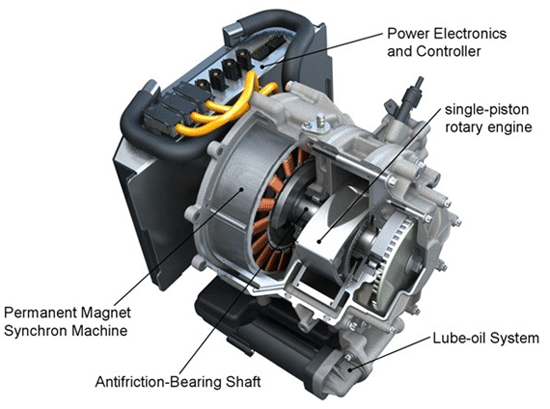
Fig.2 Schematic of the single-rotor Wankel rotary engine used in the Audi A1 e-tron (Courtesy Audi AG)
AVL used its Design for Manufacturing approach to investigate the use of PM aluminium alloys for the rotary engine housing and the single rotary piston in order to reduce mass (weight) of these components compared with the heavier conventional quench and tempered steel. Reducing the weight of these components would in turn reduce the amount of necessary counterweight, and therefore reduce acceleration losses. CO2 reduction is optimised by using an innovative coating technique for the engine housing in order to reduce friction of sliding surfaces in the engine, and by increasing the thermo-dynamic efficiency by thermal insulation. Fig.3 shows a schematic of the engine housing and the temperature distribution of the PM aluminium rotary piston used in the small Wankel engine. The extruded and fully machined PM aluminium rotary piston is shown in Fig.4.
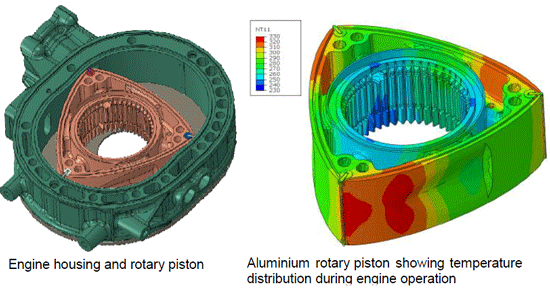
Fig.3 Schematic of Wankel engine housing and rotary piston (left) and aluminium piston showing temperature distribution during engine operation (right). (From paper by J. Blaha, et at:’New Manufacturing Process for Wankel Engine Based Components’, presented at EuroPM2012, Basel, September 16-19, and published in the proceedings by EPMA)
Fig.4 Extruded and cut rotary aluminium piston (left) and fully machined rotary piston (right). (From paper by J. Blaha, et at:’New Manufacturing Process for Wankel Engine Based Components’, presented at EuroPM2012, Basel, September 16-19, and published in the proceedings by EPMA)
Dr Blaha stated in his presentation that two air atomized aluminium alloy powders having irregular particle shape have been investigated for the housing and piston applications. The two aluminium alloy powders produced by Mepura for this research included alloy Al2618 (AlCu2Mg1,5Ni) and alloy Al4041 (AlSi12Cu). The extruded, heat-resistant PM alloy Al2618 has excellent mechanical properties up to 300°C and is already established for turbines and engines. The extruded PM Al4041 (AlSi12Cu) provides very good high temperature strength and good wear resistance. Powder extrusion billets with particle sizes lower than 400 micron were said to provide the best results.
Selecting the optimum extrusion process
Mepura currently uses two routes for the extrusion of PM Al alloy powders – the classic route via direct hot extrusion and also a ‘Continuous Rotary Extrusion’ (CRE or Conform as it is otherwise known) (Fig.5). In the direct extrusion process the powders are first cold isostatically pressed (CIP) to produce billets having green densities of 70 to 80%. These billets have sufficient green strength for handling during the extrusion process. In the CRE process the powder is directly consolidated in one step which reduces costs; however, the mechanical properties are not as good as in the hot extruded product due to the lower pressures used and the lower degree of deformation. The focus, therefore, remained with the direct hot extrusion process.
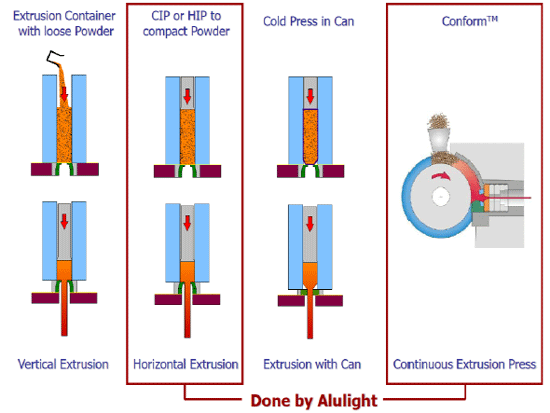
Fig.5 Extrusion processes used to produce PM aluminium extruded bars for Wankel engine components. (From paper by J. Blaha, et at:’New Manufacturing Process for Wankel Engine Based Components’, presented at EuroPM2012, Basel, September 16-19, and published in the proceedings by EPMA)
In the process used to produce the aluminium rotary pistons, CIPed extrusion billets with a diameter of 305 mm and a billet length of ~750 mm were pre-heated to a temperature of 450°C for 12 hours and extruded with a direct extrusion press with a press force of 40 MN. The extrusion behaviour of both PM aluminium alloys showed differences in flow characteristics and friction behaviour. These effects were further investigated on a small scale extrusion press at LKR (Leichtmetallkompetenzzentrum Ranshofen), the third partner in the Austrian Research Promotion Agency (FFG) funded development project, in order to transfer optimised process parameters to the industrial extrusion press. Extrusion ratio was ~1:9. To reduce the amount of machining after the extrusion of the rotary piston tight manufacturing tolerances were implemented.
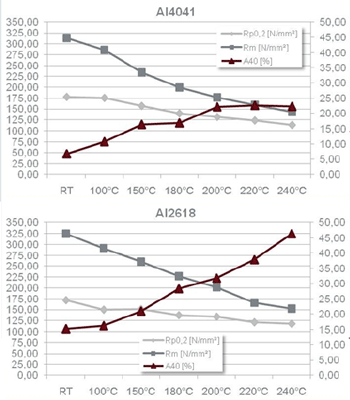
Fig.6 Material properties of PM aluminium alloys (Al4041,
Al2618) at elevated temperatures. (From paper by J. Blaha,
et at:’New Manufacturing Process for Wankel Engine Based
Components’, presented at EuroPM2012, Basel, September
16-19, and published in the proceedings by EPMA)
Dr Blaha stated that the main benefits of PM and extrusion process are the high thermal stability of the PM aluminium alloys, the reduced production time per component, and the greater flexibility in length of the manufactured components. Also due to the high solidification rates during atomization, extruded PM aluminium alloys provide very fine grain sizes (40 to 150µm) compared with cast alloys. The tensile properties of both PM alloys were investigated from room temperature up to 240°C based on tests performed according to DIN 50125 on a Zwick universal testing machine. Both PM-Aluminium alloys showed similar temperature dependent behaviour. Yield strength reduced from 175MPa to ~115 MPa at 240°C test temperature. Contrary to Al2618, which showed constantly increasing ductility, for Al4041 the elongation at fracture stabilized above 200°C at a value of ~23%. The material properties of the two alloys investigated are shown in Fig.6.
Further investigations are to be carried out on the use of surface coating for thermal insulation of the rotary piston and to improve tribological performance. Results from engine test bed data for the new prototype Wankel rotary engine are expected to be available by the end of 2012. The success of the project would see Wankel rotary engines produced commercially again in Europe since the 1960s when NSU first used a single rotor unit developing 50HP for the 2-seat NSU Spider in 1964. NSU was absorbed by Audi which in turn became part of the Volkswagen group of companies. Only Mazda in Japan has pursued the Wankel rotary engine using it in some of its cars such as RX-8, the earlier RX-7, and other models.
News | Articles | Market reviews | Search directory | Subscribe to e-newsletter
⁞



